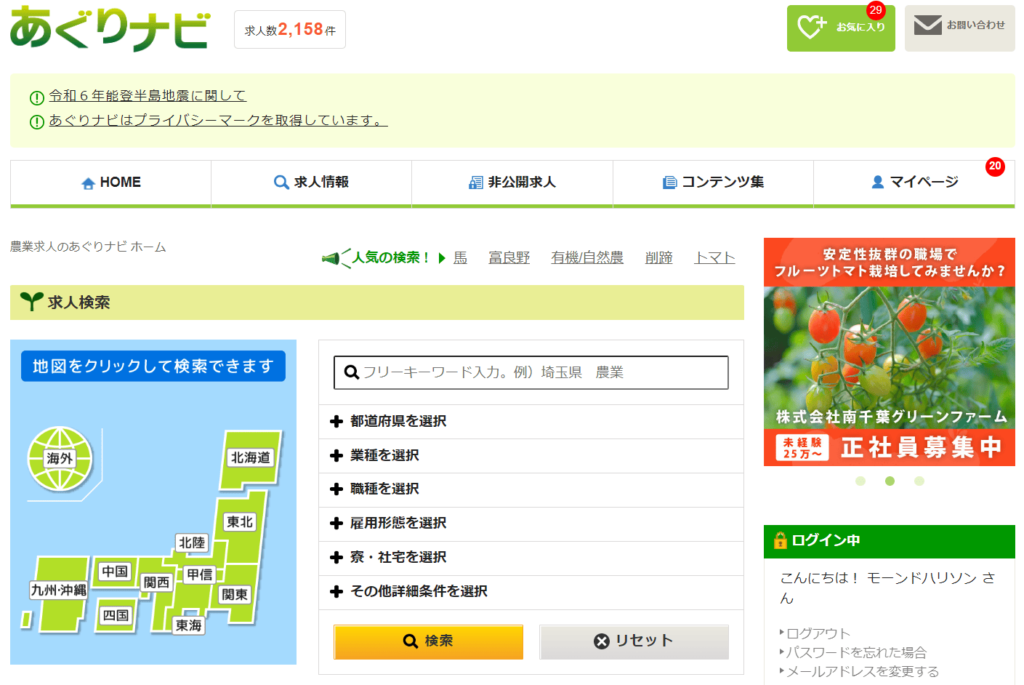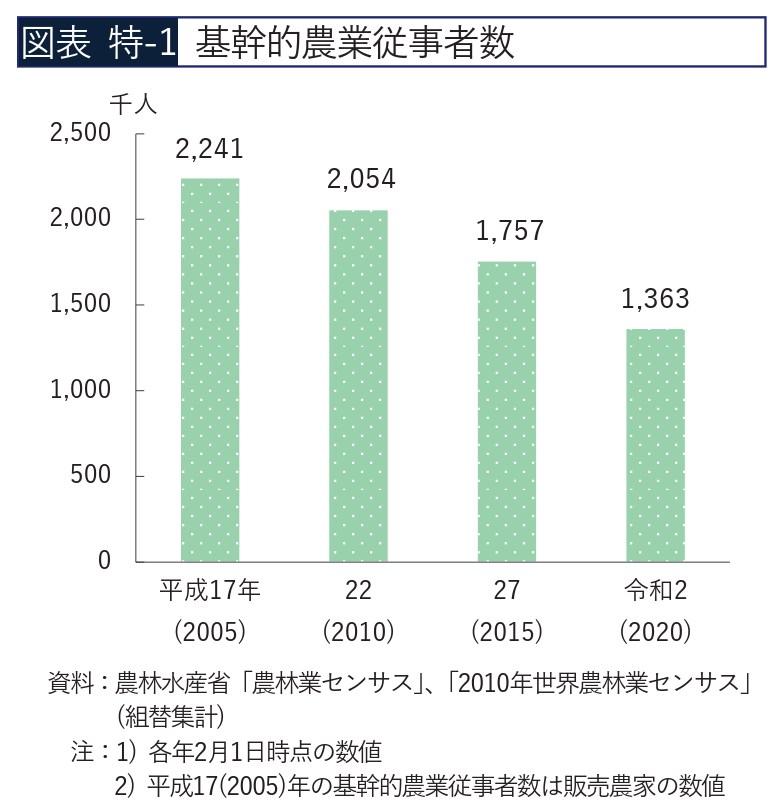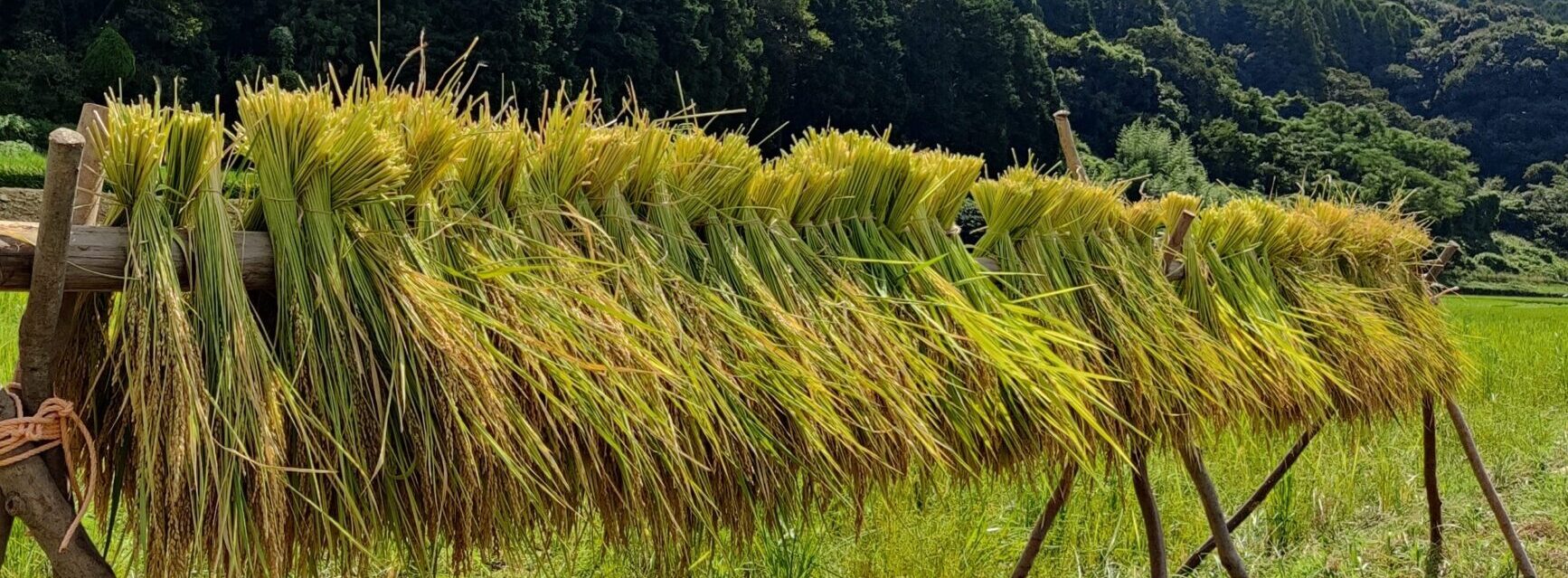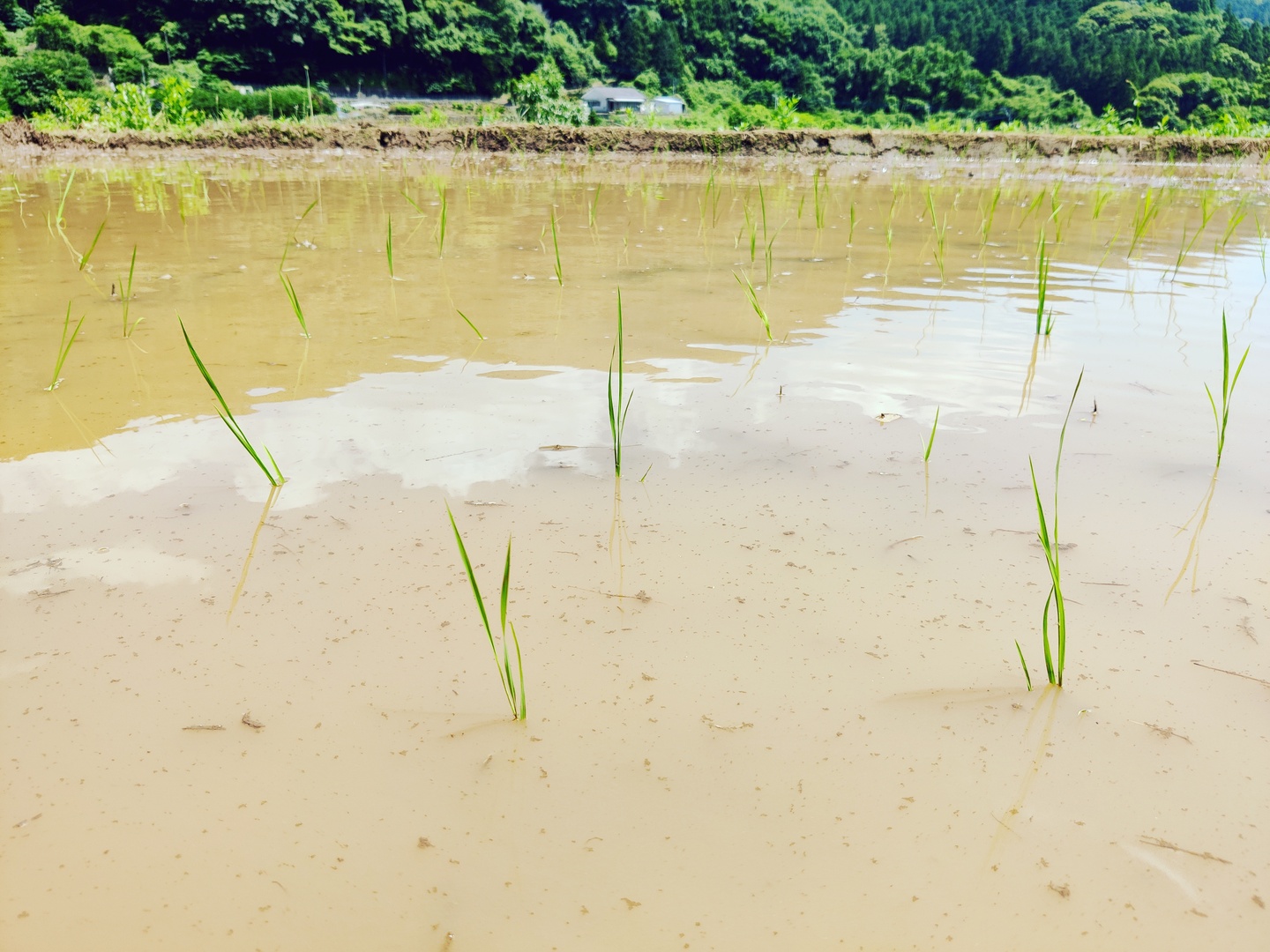I started this year with a lot I want to write about and share with people, and though my attention has been captured by job hunting, this has provided another opportunity to share some information.
Anyone familiar with job hunting in Japan will know of the job listing site MyNavi. They are constantly trying to expand into every area of the employment market. As I am looking for farming jobs in Japan I wanted a service tailored to that. The biggest one seemed to be the agricultural job listing website called あぐりナビ (AgriNavi). あぐり(agri) being short for agriculture and ナビ (navi) meaning navigation.

I like the simple layout AgriNavi has, and it appears to have more total listings than other websites (AgriNavi has 2,158 compared to 420 from this site or 1196 from this one as of 12.02.2024), which both occupy similar rankings on google search.
On agrinavi you fill in your profile which acts like a mini-CV and you apply to their job listings. I assume the potential employer then gets a notification, can see your profile and then decides whether to contact you or not to ask for a full CV.
I’ve made several applications in this way and a couple places have sent prompt responses. Some places have contact details on their listing and AgriNavi recommends that you call the employers if they haven’t responded to your application within 3 days. You could also call them from the start. Unfortunately, there is no support on the website for foreign nationals or any English version of the website.
As I was browsing the AgriNavi website recently, a short article about the state of current agriculture caught my eye. It seemed like a good candidate for a quick and interesting translation. Have a look:
Agriculture Now
Present Agriculture
What is the current state of agriculture? The number of people currently employed in agriculture is decreasing year-by-year and according to statistics from the Ministry of Agriculture, in 2013 this number was approximately 2,390,000. Considering that in 2008 this number was 2,980,000, over 5 years there was a decrease of 600,000 people. If this trend continues… I’m sure you can see that it will cause severe problems.
A Serious Lack of employees
At present, there is a deficiency of 1,000,000 people in the agricultural workforce. Because of this, the number of young people choosing to look for employment in agriculture is increasing. In response, organisations looking to support young people who want to work in agriculture are expanding their services. Conventions for people looking to work in agriculture are being held regularly. There are also events being held in various parts of the country to allow employers and potential employees to meet directly. At these events, you can talk with people currently working in agriculture and hear about their experiences directly. This also provides, an opportunity to consult with them about internship opportunities.
Merits and Demerits
The good thing about these events is that you can join even if you’re not looking to find a job straight away. People who are still thinking about their future or people who are considering a change of work can freely attend. Through events like these, more people are starting to enter the agriculture sector, but still many more people are needed. While there are a lot of prospective employers, most of them cannot offer a very high wage. There are lots of other merits, however, such as being able to eat what you grow and being able to live a peaceful lifestyle surrounded by nature. Additionally, many places may provide meals or offer boarding to their workers. Young aspiring farmers are attracted by these merits. There are also websites where you can efficiently search for employers in agriculture, so we encourage people to utilise this. It could be said that how Japanese agriculture will change from here on out rests in the hands of young people.
Please let me know what you thought. For me, reading the article was a little frustrating. First, the article pulled you in with some interesting statistics, and then the rest was a thinly veiled advertisement their own services as a reason people are joining the agriculture workforce. Overall, the article provides very little value to the reader. It makes me wonder who the target audience is. The article did not have a named author and only off-handedly referenced the source of their data, which seems to be a trend for this level of article anywhere on the web.
Ultimately, I couldn’t find their exact source, but if you go to the Japanese Ministry of Agriculture Forestry and Fisheries (MAFF) website you can find similar consensus data. Reading this, we can see that yes, the number of people in the agriculture workforce is going down. There is only a slight uptick in the number of younger people entering the workforce in the past 5 years.

Looking at just these numbers it almost seems incredible that the entire food system hasn’t collapsed. Has production remained similar? Has this been helped by the condensation of farmland into larger companies with can potentially be more efficient?
Many of the companies hiring full-time employees I saw on AgriNavi were corporations managing large amounts of land with a fleet of tractors and other heavy machinery. Farming intensification and large corporations managing more and more land in Japan seems like an inevitable trend considering how fast the rural population is shrinking. The question I want to answer is how to ensure this trend becomes a net benefit for the environment and people’s health.


Leave a Reply